By Rachel Lovelock
It’s 5.30am, somewhere on the Kahayan River in Kalimantan, Borneo.
River Cruise in the Kahayan River of Borneo
I’ve just rolled out of my comfortable bed aboard the Rahai’i Pangun riverboat; this would normally be way too early for me yet it’s already daybreak in this Central Indonesian time zone. Our sunrise view is currently obscured by a heavy blanket of river mist. Yet, through the cloudy layers of rising moisture, the dawn chorus is in full song.
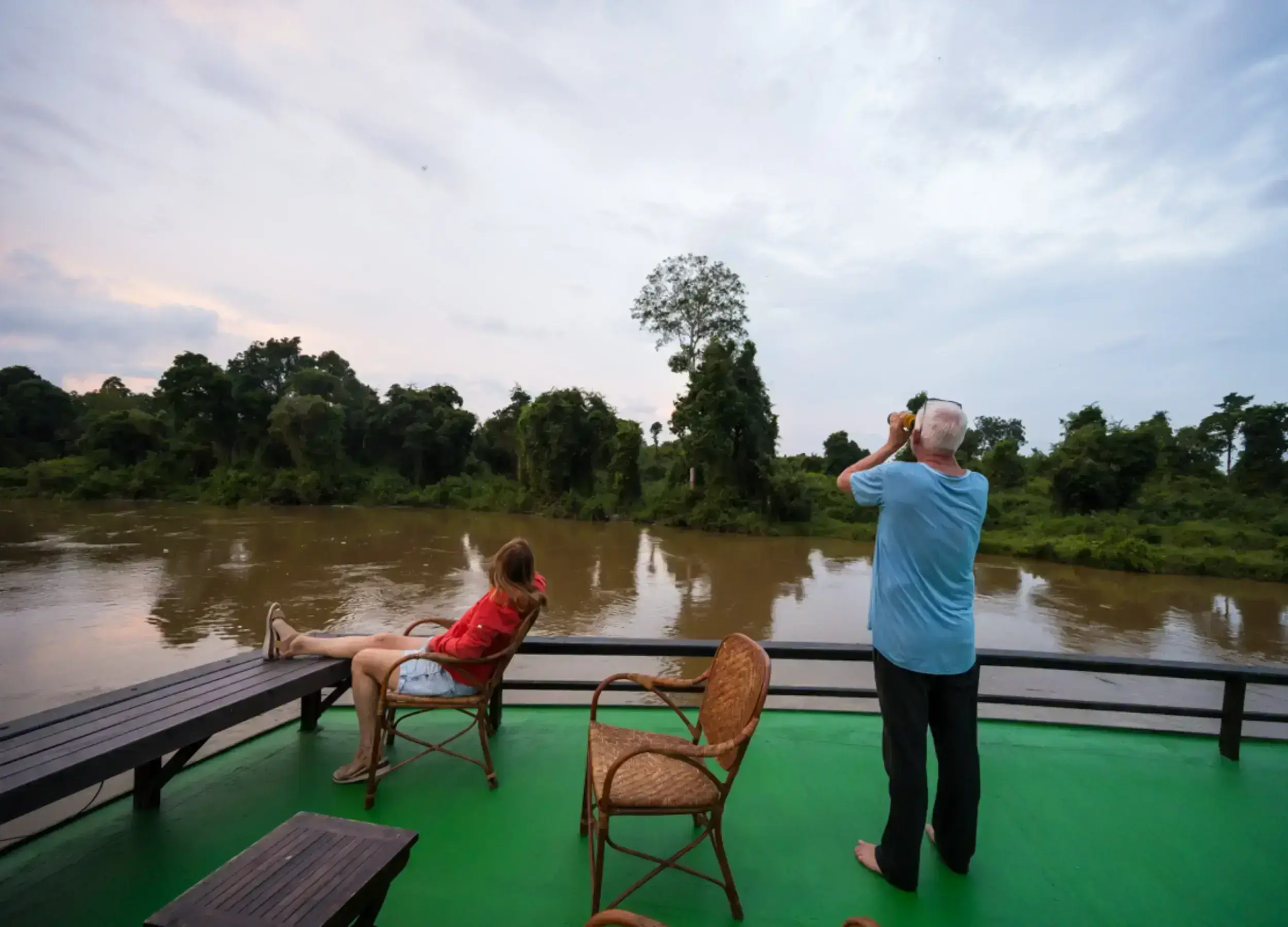
Two motorised canoes, complete with skippers, are waiting alongside our boat for our party of four. The put-put noise of the engines soon kicks in and the sound reverberates around us. I prefer the silent oars, which gently glide the canoes through the water as if they were creatures of the forest, but the reality of life for the Dayak villagers who live on the riverbanks, is quickening as they have embraced Western values, and engines are a necessary part of that need for speed.
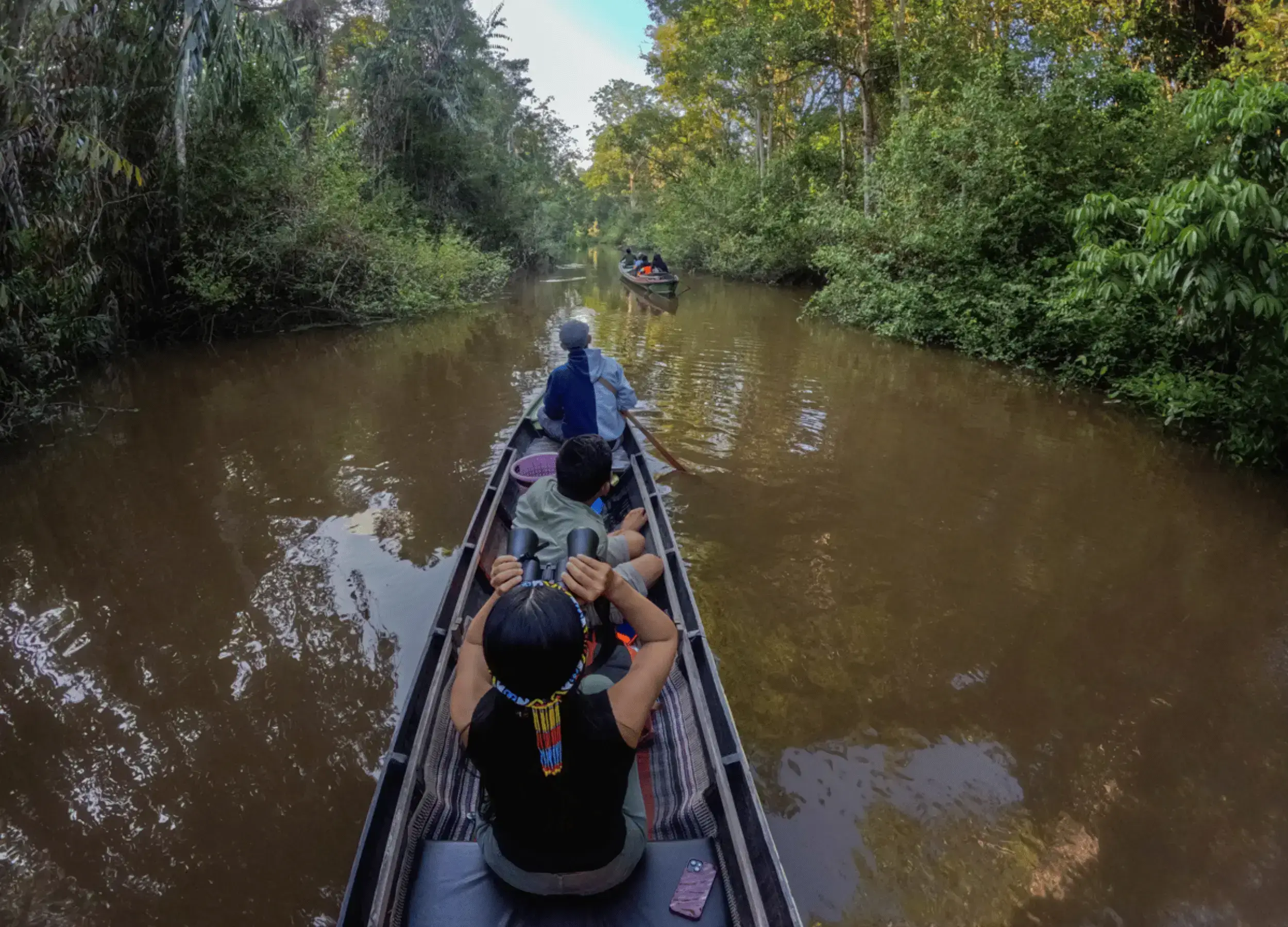
We soon turn into a narrow channel of black-tea coloured water, and I stare fascinated as it converges with the cafe-au-lait hues of the broad, main river.
Blackwater Lake Bagantung and Ecotourism in Borneo
The channel delivers us to a low-lying peat swamp terrain, home to the blackwater Lake Bagantung, which is comprised of dissolved organic carbon-rich water. This phenomenon occurs naturally when floods wash copious amounts of leaves, grass and other organic material off riverbanks and floodplains into waterways. Peat swamp forests, such as this, play an essential role in carbon storage, helping mitigate the effects of global climate change.
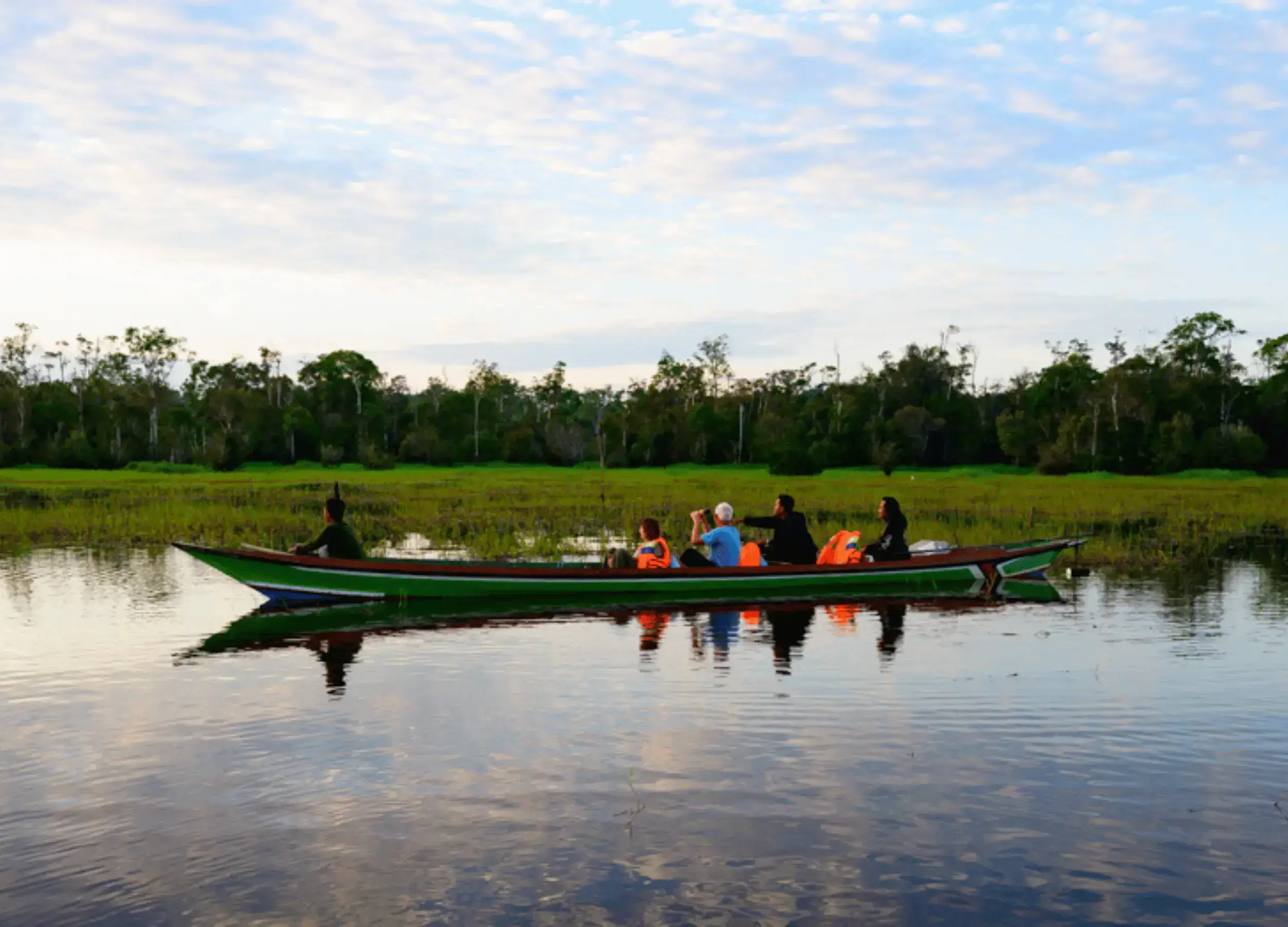
Bagantung is more than just a blackwater lake, it is a model of community-driven conservation, a source of livelihood, and a haven for biodiversity. The lake’s unique ecosystem and cultural significance make it a shining example of how nature and local knowledge can coexist in balance.
The water level is low at this time of year, and our skippers drop overboard into waist-deep water and push our vessels into more navigable depths. Numerous secret channels veer off in different directions though thickets of pandanus, the lake is vast, I’m told it spans more than 50 hectares. Ecotourism here is carefully regulated. All visitors must be accompanied by a local guide, ensuring that tourism enhances, rather than threatens, the lake’s ecological balance.
The Lake with Numerous Secret Channels
I’m thankful for our knowledgeable skipper, he tells me that a local man recently got lost for nine days within this black lake system, complete with its countless tiny islands that appear to float and move across the surface within the mist. But now the mist is lifting, and a watery sun has made an appearance through the haze, as patches of blue sky emerge.
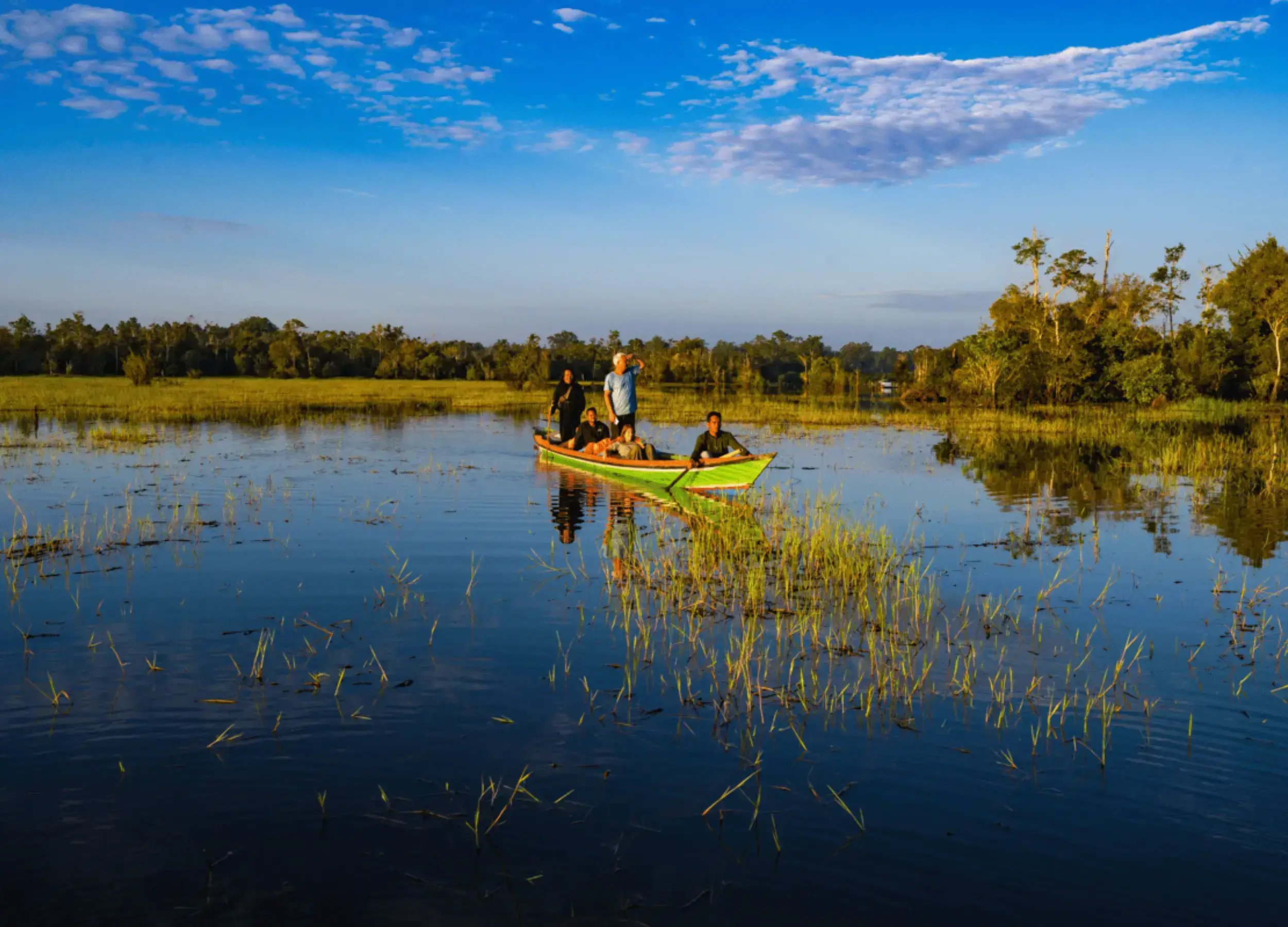
A Brahmini kite perches at the top of a dead tree. I notice a number of blackened skeletal trees, peering through the eerie wisps of mist. Forest fires in 2015 severely damaged some of the native peatland trees, including the Shorea blangiran or Red balau − a large, buttressed, hardwood tree that can grow 30-metres or more in height.
As the sky becomes brighter, its blue reflection and that of the scattered clouds and swamp trees is mirrored in the black waters of the lake, to dramatic effect. Each time we get closer to the kite, he takes off and flies just a very short distance ahead of us before landing on another tree; he knows his way through the swamp, is he leading us out? Could he be our spirit guide?
Another Magical River Cruise in the Katingan River of Borneo
A few days later, I’m in a different region, on the Katingan River, aboard a different riverboat, called The Spirit of Kalimantan. Once again, my companions and I have boarded canoes at 5.30 am and motored to yet another expansive peat wetland. Another fragile ecosystem that is increasingly threatened by logging, goldmining, and land conversion for agriculture − in particular, palm oil plantations.
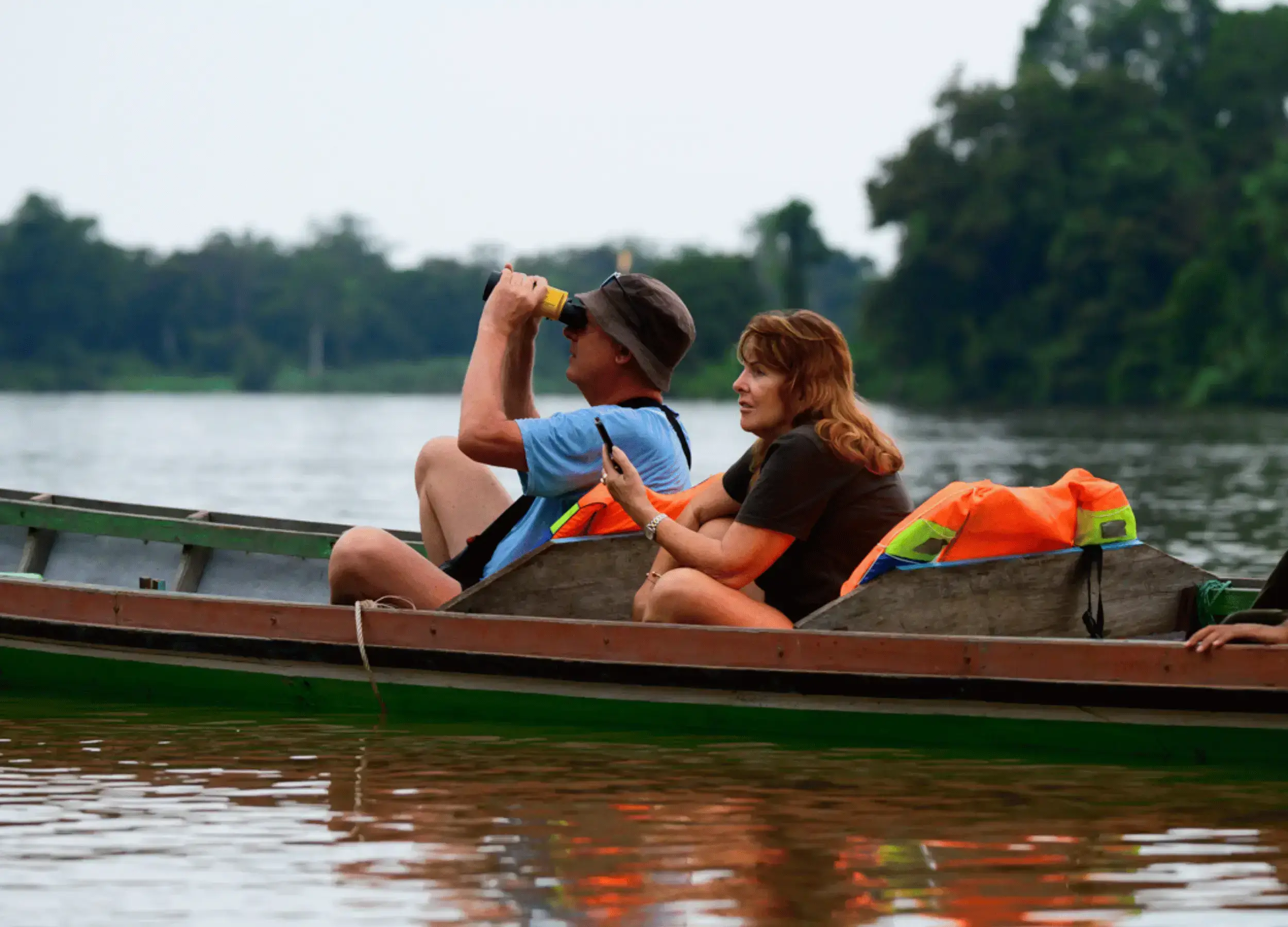
But here on this tranquil freshwater lake, I am being offered a glimpse into a world that has remained unchanged for centuries. There’s no mist this morning, the air is clear and the dawn light is magical. The wetland is replete with birdlife.
Encountering Iconic Wildlife in Borneo
We spot the iconic and majestic Rhinoceros hornbill. These magnificent creatures have a wingspan of up to 1.8 metres. Our guy is pitch black, with a white tail marked by a dark horizontal stripe, and an enormous bright orange bill, with what appears to be an upswept horn − actually a casque − growing out of his forehead, hence the name “hornbill.”
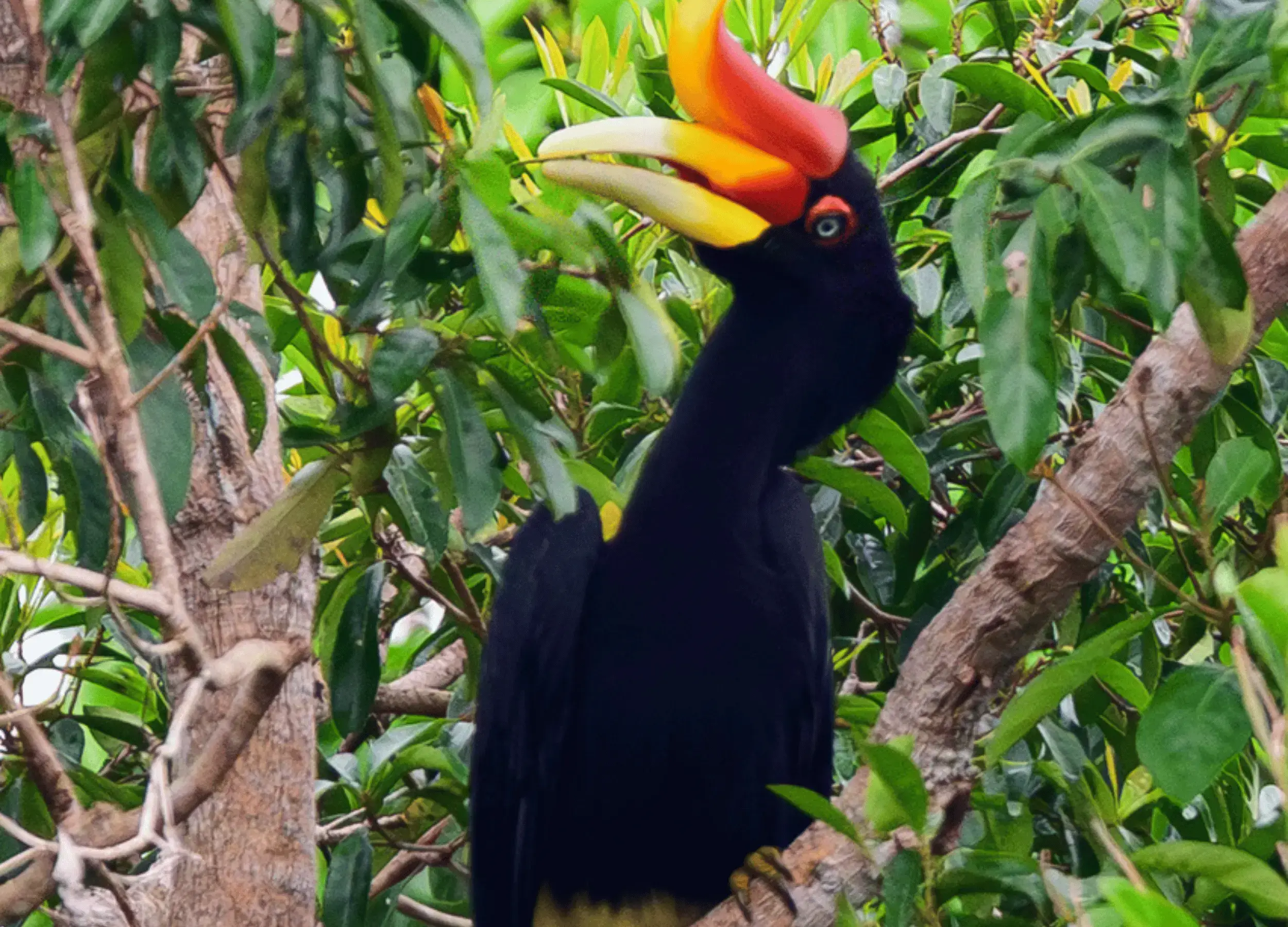
We also see and identify the Stork-billed kingfisher, several Purple herons, and some Oriental darters, hunting along the lake’s edge. Smaller, but equally captivating, are the Black-and-red broadbills, Blue-eared barbets, and Asian fairy-bluebirds. Their brilliant plumage and melodic calls fill the forest with colour and sound.
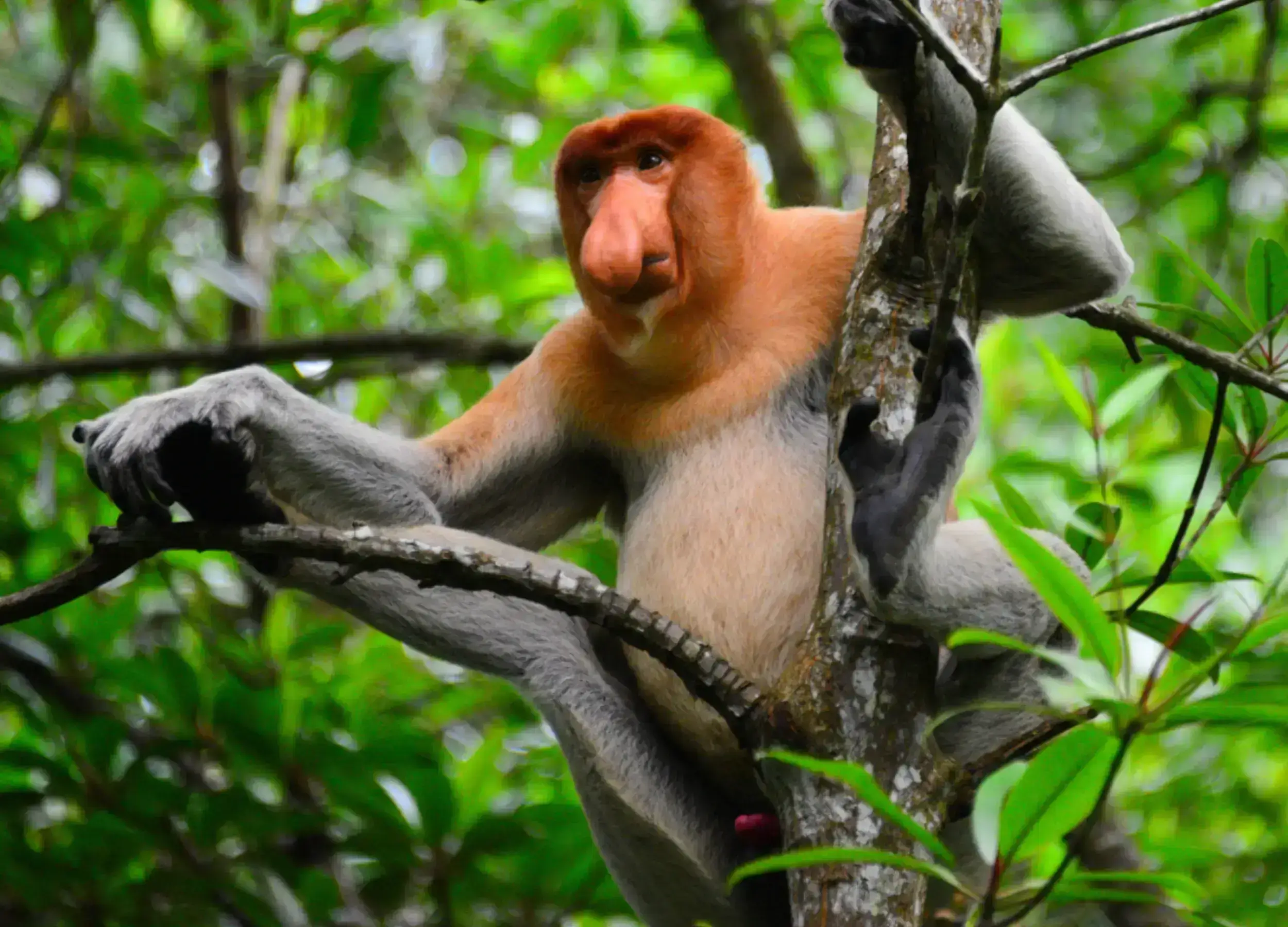
Finally, on the way back to the boat, we see a harem family of the ridiculous-looking, pot-bellied, pendulous-nosed Proboscis monkeys, swinging and leaping through the branches of a towering Red balau tree.
Our early morning river cruise mission is complete.
Plan Your River Cruise with SeaTrek and Wow Borneo
Explore the rivers, wetlands, birds and wildlife of Kalimantan with ‘Wow Borneo’, as part of SeaTrek’s Orangutans & Dragons, Borneo-Komodo cruise.







